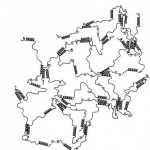Mechanical communication in cardiac cell beating
We have recently demonstrated that cardiac cells can communicate mechanically by responding to deformations generated by their neighbors. We have shown that an isolated cardiac cell can be trained to beat at a given frequency by mechanically stimulating the underlying substrate. The stimulation was applied by an artificial “mechanical cell” , consisting of a probe that generated periodic deformations in the underlying substrate. The deformations mimicked those generated by a beating neighboring cardiac cell. The induced beating rate was maintained by the cell for over an hour after mechanical stimulation was stopped. We have further shown that mechanical communication plays and important role in cardiac physiology and is essential for converting electrical pacing into synchronized beating. We are currently studying the underlying mechanism and the implications on cardiovascular diseases.
Link for the relevant Publication in Nature physics
Mechanical communication in neuronal networks
In the group, we explore the role of mechanosensation in neuronal interactions, focusing on the molecular-physical nature of the mechanical coupling between neuronal cells and their environment. We study the role of mechanical communication in spontaneous synchronized activity during the development of the nervous system and the ability to utilize it to induce injured axons to reconnect with their targets after injury.

Mechano-sensing in Nerve regeneration
Sensory axons exhibit unprecedented rates of growth when subjected to continuous mechanical tension. The mechanism underlying this phenomenon is not understood, although it is thought to play a critical role in axonal growth in vivo for formation of the adult nervous system. We study the molecular-physical basis of stretch-induced axonal growth and the ability to utilize it as an axonal guidance mechanism.

Design of mechano-sensitive biomaterials for tissue engineering application
In the group we use protein engineering approaches to prepare novel mechano-sensitive biomaterials from basic molecular design principles. Structural and bioactive domains can be easily incorporated into engineered materials at the genome level in order to support and guide cellular behavior and apply the correct mechanical cues. These materials provide chemical and mechanical support for maturation and synchronized beating of cardiac cells and promote efficient propagation of mechanical deformations. The connection between the molecular structure, the macroscopic properties and its ability to promote mechanical cell communication is investigated using high resolution microscopy with nanometric resolution and theoretical models.

